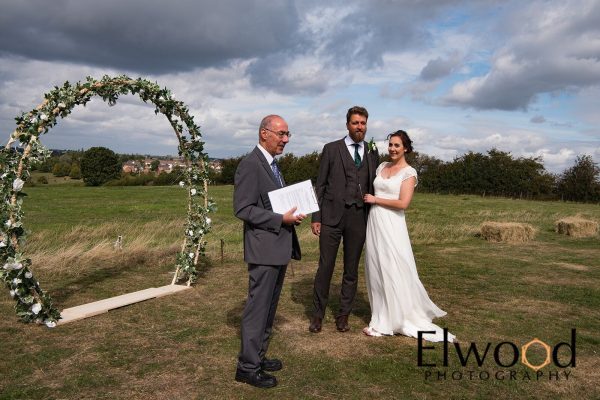
by Michael | Aug 10, 2020 | Blog
A traditional full religious service still suits many – although fewer than it used to.
A register office service is limited, not least because it is standardised and barely differs from one couple to the next.
So a lot of people are looking to personalise their wedding ceremony.
Venue
Apparently,
some 16% of UK weddings in 2019 were held in a rustic or woodland setting. Warehouses
(where you’ve got a blank canvas to work from) are gaining in popularity. And
then there are marquees and beaches, not to mention old favourites like hotels
and castles.
You may be taking a gamble with our notorious British climate, but you have a huge range of options as regards venue. Even allowing for social distancing.
Décor
Another way to individualise your wedding is the décor. It can be handmade or simply bear your stamp, offering unique designs. This can apply to invitations, seating plans and general signage.
Flowers
An obvious
way to show individuality and to beautify proceedings is with a show of flowers.
This can extend to a floral arch (as in the photo by Elwood Photography above)
or simply to bridal bouquets and table furnishings.
Attire
Then, of course, there is no obligation to dress in traditional outfits these days. The bride doesn’t have to wear white; the groom may not wear a suit. However, they can each show originality and personality.
An
interesting touch can be small details like coloured socks or a special cravat
for the groom.
Ceremony
As a civil celebrant, I would say this, but the ceremony can be personalised to great advantage. There are lots of examples, but writing your own vows can be great. This is an opportunity to say some very moving things, but also display humour and affection.
There could also be a choice of ritual, and the whole service can reflect the couple’s personalities and beliefs and be very special.
All of this,
especially preparing the ceremony, is something I can readily help you with.
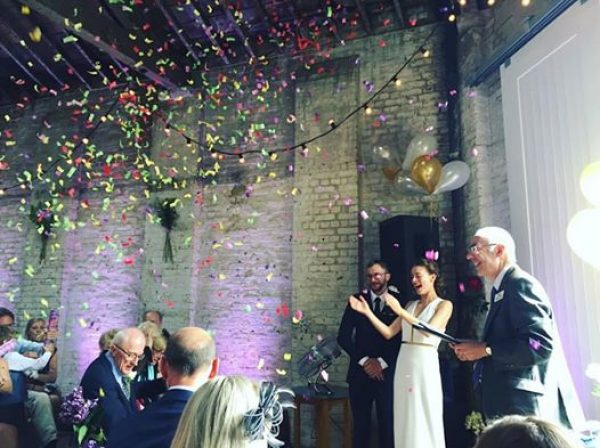
by Michael | Nov 6, 2017 | Blog
What makes a wedding ceremony stand out? What makes a unique wedding?
Of course, there are many contributory factors, such as the decor or flowers, but the ceremony itself is most likely to stick in the mind of your guests.
Maybe a unique service means a full religious one. You will know what you’re getting, so your choice will have been an informed one. But your service is likely to be conventional (rather than unique) and similar to other people’s.
If you’ve decided against a religious service, you may opt for the registrars (either at the Register Office or at a licensed venue that the registrars will come out to). As a minimum, you will need this, as this service includes the essential legal wording. The ceremony will usually last 10-15 minutes, and, however nice it may be, you will be part of a conveyor belt process. Again, not really a unique experience.
A creative option
Should you want religious elements (and you can’t or won’t use your church etc. for whatever reason), you can have a bespoke ceremony in addition to the registrars’ service.
Unlike the two types mentioned above, the civil celebrant-led ceremony will be unique. You and your celebrant will work together and compile a ceremony that reflects your beliefs and personalities, and will be everything you want it to be.
Possibilities
Examples of what you can include that may make your ceremony personal and special are: writing your own vows or putting together your story (how you met, what attracts you to each other, etc.).
However, there are many rituals which can make the ceremony stand out. They are too many to mention, but, to name but two, there could be the Unity Candle and a handfasting.
Unity Candle
You can have a special candle made, together with matching tapers. The two of you light the tapers and, together, light the Unity Candle. The symbolism is obvious! (Do take the wind into account, if it’s an outdoor wedding!)
Should you have teenage children, then they could light a taper too, and light the unity candle with you. (Similarly, you could do this in a sand ceremony.)
Handfasting
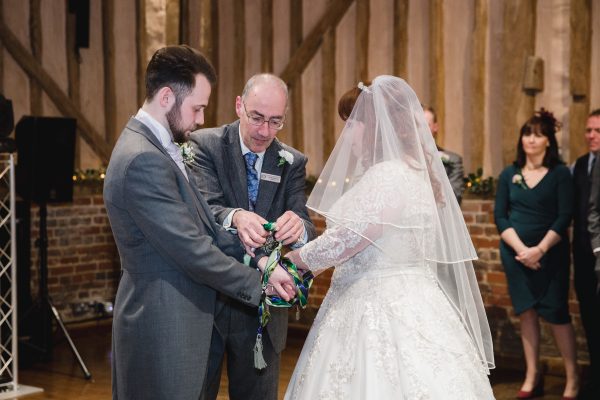
Source: louiedonovanphotography.co.uk
A handfasting is a symbolic binding of the four wrists. It can be over with in a minute or two or, in a pagan wedding, be part of a much longer ritual.
You choose a cord or ribbon of whatever colour(s) you want, but make sure it’s at least a metre long. You join hands with your partner – left hand to left, and right to right – and your wrists are then bound, as beautiful words are spoken by the celebrant. Oh, and after a while, you will be released!
So just a flavour of what you can do to make your wedding truly unique. To find out more, please contact me (07931 538487), and I’ll be delighted to help.
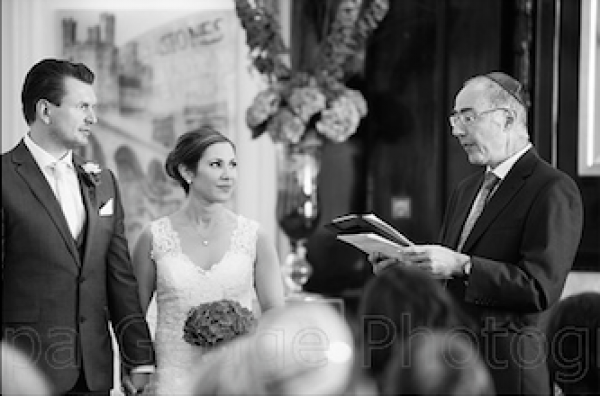
by Michael | Jan 16, 2017 | Blog
Wedding bells are ringing. Or are they?!
A Muslim and Jewess want to marry. A Christian and a Jew are very much in love. A Pagan and Russian Orthodox want to tie the knot.
A mixed-faith marriage is a bit special, is it not?
Having conducted a number of fabulous mixed-faith marriages in the last years. I’d answer with a resounding“yes”.
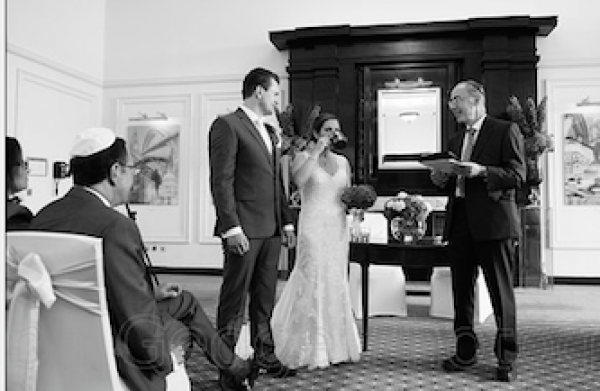
Photos courtesy of Philippa Gedge Photography
Not so simple!
Well, not everyone might be as enthusiastic as me!
What if the couple want a religious (or even, part-religious) wedding? How will they manage, if their church/synagogue/mosque/temple/you name it refuses to recognise their union?
The obvious answer is a civil ceremony. There are two kinds, so you have a choice.
Register Office Service
The register office service contains the necessary wording to make the marriage legal, so it is indispensable. Unfortunately, the ceremony itself is (reasonably enough) standard and somewhat impersonal. More to the point, it has to be totally secular. There may be no reference whatsoever to religion or even use of religious vocabulary.
So this solution, though worthy in its way, may not meet the needs of most mixed-faith couples.
Civil Ceremony
Another choice is to use a civil celebrant. As a celebrant-led ceremony does not encompass the legalities, it would have to be in addition to the registrars’ service.
As for venue, you would have two options. If your venue is licensed for marriages, the registrars will come there, perform their service and leave. At which point the civil celebrant can begin your personalised ceremony.
Alternatively, you can marry at the register office (by appointment), with two witnesses, and proceed (that day or a following one that you select) to the venue of your choosing, be it indoors or outdoors. Then you can celebrate your bespoke service absolutely as you would wish.
Advantages
The beauty of a civil ceremony is that you can incorporate your ideas and desires into the ceremony. It’s your big day, after all. So why shouldn’t you have full input? And if you are short of ideas, let your celebrant offer suggestions.
Your celebrant may well not be ordained, but he/she will still be able to include religious elements. These might be readings, music or ceremonial items. The most beautiful thing is that both partners’ religions can be honoured in this way.
Perhaps you know a mixed-faith couple who are planning their wedding, but are not happy about the options open to them. If so, please send them my way, and I’ll be delighted to have a non-obligation chat with them. That way, they may still end up with the ceremony of their dreams!
How cool would that be?!
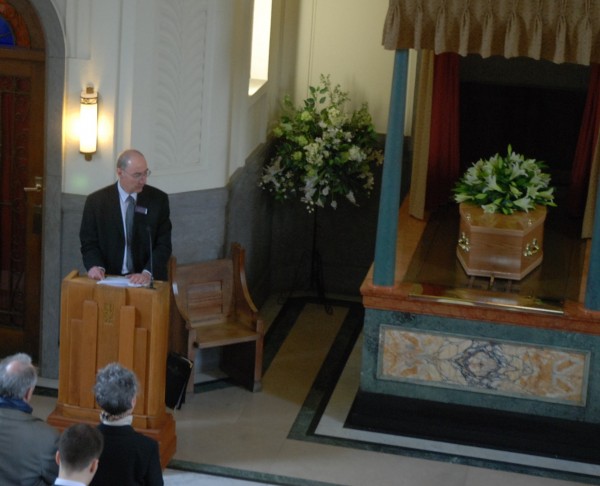
by Michael | Jan 4, 2016 | Blog
Let’s be brutally frank: it’s funeral season. And let’s face it, we’re all going to die some time …
I’m a funeral (as well as a wedding) celebrant. So here’s some guidance that may be helpful to you, when the inevitable happens.
Death
If someone dies at home (or in a nursing home), a doctor must be called to issue the Medical Certificate of Death. This will be done by hospital staff, if the deceased dies while in hospital.
Assuming there is no need for a post-mortem, etc., the next step, before arranging the funeral, is to make an appointment to see the Registrar.
Registering the Death
There are lots of choices how to commemorate a death, but, come what may, it has to be recorded legally. So the registrar will need to be informed, and will want:
- details of the death (including the Death Certificate)
- name, address, date and place of birth of the deceased
- their occupation
- whether they were receiving a pension or allowance from public funds
- if married, the date of birth of the surviving spouse.
The funeral
The Procession
Historically, a cortege was much favoured, and today you can still see horse-drawn hearses. Most commonly, though, it will be a limousine – although you can actually come across a range of creative ideas for the procession (eg motorcycle hearses, or bringing the coffin by a lorry, say, to reflect the deceased’s profession or passion).
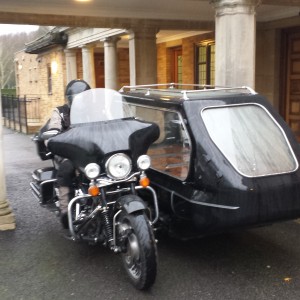
Burial
There are a number of interesting customs still in use – mostly in Wales, Scotland and Northern Ireland, where burial tends to happen sooner. Some regional traditions include the use of cords to lower the coffin (Scotland), families in Wales announce a death by pinning cards to lamp posts and there are the ‘lifts’ (Northern Ireland), where the coffin is passed from hand to hand. In England, rosemary may be placed on the coffin or at the graveside (symbolising remembrance).
It is traditional to strew soil or rose petals over the coffin, but nowadays there are new rituals, which may include live music, fireworks, release of doves, bubbles or balloons.
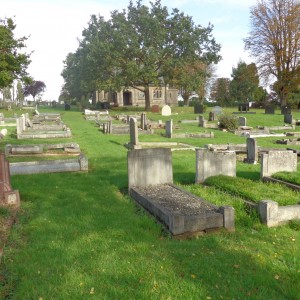
Cremation
Ashes can be buried, scattered or kept, so it is as well to consider these options carefully. There are various regulations about scattering or burying ashes, and a Funeral Director should be able to advise you.
The service
Music still plays a big part at a funeral, but religious music is in decline. People prefer songs associated with the deceased (or chosen by them). An organ is often an option, but usually the chapel may have a Wesley System (which can access most songs). Alternatively or additionally, CDs or MP3s are the order of the day.
Orders of service have often become more elaborate than they once were. Now, in addition to the deceased’s name, date of birth and death and the words of any hymns being sung, there may well be photographs and stories.
Speeches and Eulogies
In many cases, the person leading the service still delivers the eulogy, but increasingly family, friends and work colleagues may contribute a poem, a memory or a tribute.
Celebrant
If you use a Funeral Director, they will give you information about the funeral and should explain that you can have a full religious service, a humanist-type one (totally secular) or a part-religious funeral ( combining both elements). They will then put you in touch with the appropriate celebrant.
In most cases, the celebrant will visit and discuss the choices that may be available to you so that you can have the service that is most fitting and, hopefully, satisfactory.
Perhaps this is the moment to remind you that I offer religious, part-religious or non-religious services! I even write and prepare funerals for those who want to have a say in their funeral during their life-time.








